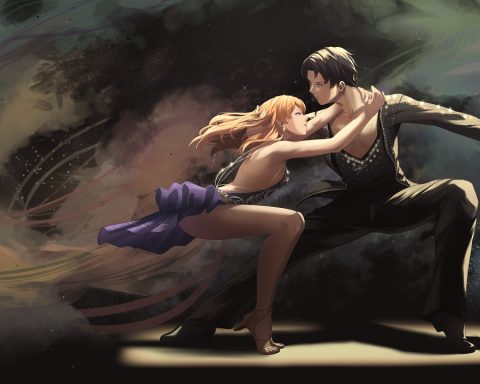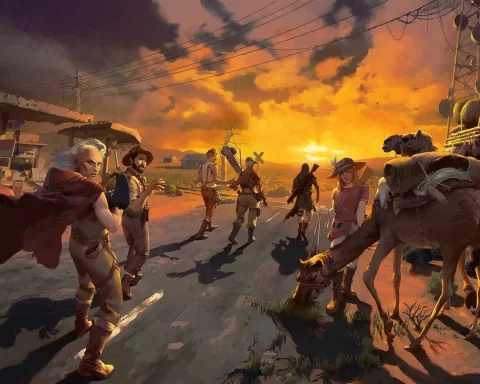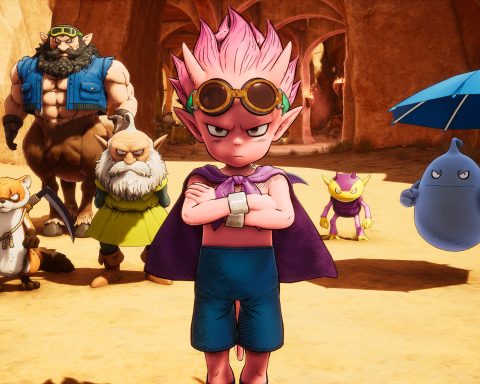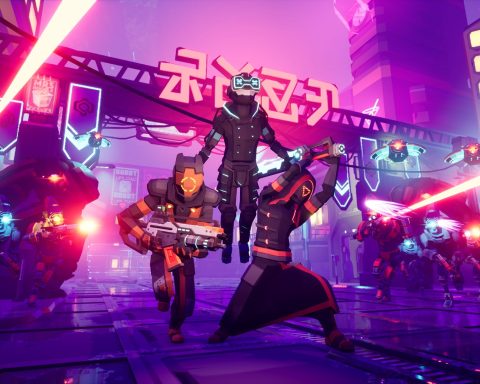Review by Matt S.
Idea Factory hasn’t had the greatest track record when it comes to Nintendo Switch ports. It might have something to do with their engines or optimisation, but as much as I have enjoyed the likes of Fairy Fencer F and Megadimension Neptunia VII on the console, I do agree that the actual port quality has been sluggish. Unlike some, I don’t think it necessarily matters with slow-paced turn-based games, but for the new port of Azur Lane – a twitchy 3D SHMUP – a stuttering frame rate and uneven performance just would not have been acceptable. Thankfully, Azur Lane: Crosswave on Nintendo Switch is every bit as slick and dynamic as it is on PlayStation 4, and having this thing on the go is a good thing indeed.
Azur Lane’s set-up is brilliantly fanservicey and while Compile Heart didn’t develop the mobile original that Crosswave is based on, Compile Heart is absolutely the right developer for the game. In Azur Lane you command World War 2-era battleships as they fight against an invading alien horde. It would be a surreal enough concept if they were actual battleships in the water, because the four nations that are allied in the conflict are based on Germany, Japan, America and the UK and those four nations were rather famously not allied during World War 2. But that pales in comparison to the surrealism of replacing each of the military boats with cute anime girls. They are still naval ships, it’s just that rather than be boat-shaped and cutting through the water they are instead girl-shaped, and hover over the ocean as they rain MMO-style special abilities down on their opponents. They’re still named after real-world ships. They’re just a good deal more appealing to look at.
Azur Lane isn’t meant to be taken seriously, of course, and aside from the naming conventions, there’s no reference to the real-world heritage of these ships (just as well). It is fun to see how each of the characters has been interpreted as an anime girl, however, with aircraft carriers tending to be the bigger and more powerful-looking sprites, while the smaller ships tend to be the lolis. Across the full spectrum of anime you’ve got some kind of fan service in Azur Lane, and it’s actually impressive just how many highly detailed, visually distinct characters there are to enjoy.
The game is split unevenly into two. The larger chunk of the game plays out like a visual novel, and these sequences do drag on for far longer than they need to given how little of substance is said. I haven’t played Azur Lane in its native Japanese, but I’d be willing to bet the puns and humour lands a little harder untranslated. That’s not necessarily a criticism of the translation, mind you – it’s perfectly competent – it’s just that it’s hard to imagine the occasionally rambling dialogue wasn’t meant to be punchier on its original writing.
With that being said, while Azur Lane doesn’t have the most densely philosophical narrative and there might be a little lost in translation, I’ve found myself enjoying it more the second time around. Perhaps it is the greater familiarity with the characters this time, or the lack of anticipation on what’s coming up, but I found it easier to settle into and enjoy the moment-to-moment narrative beats. Azur Lane covers off most of the standard anime tropes, but it does so with panache and relentless charm, and every character gets enough screen time that you can come to enjoy them all.
Breaking up the lengthy narrative sequences are the combat missions. Combat is more of a focus in the latter half, but because battles tend to be short and furious, it never feels like you spend much time with them. Each character has their own particular attacks and abilities, and once you get deep enough into the game, mixing and matching the right teams to suit your playstyle is a fun little process. The game’s heritage as a gatcha mobile tile is clear to see here, though thankfully you’re not going to be asked to hand over real cash and do “draws” in Crosswave. This, however, does result in some interesting balancing issues with difficulty spikes and the like – difficulty spikes themselves being nothing unusual for an Idea Factory game, but here it feels tuned in a distinctly “mobile-like” fashion.
You do also get to play around with photo modes and the like; Compile Heart play the fan service up to its maximum, and there are some little bonuses in there for people who already own the game on PlayStation 4. Really, though, there’s not much to add above and beyond our review of the PlayStation 4 game; this is an almost surprisingly good port to Nintendo Switch, and thanks to those mobile roots it does feel like a game better suited for the comforts of a handheld than the “big screen” – the combat action lacks the sustained thrills for the big screen experience, but the dynamic twitch gameplay makes for the perfect commute killer.









